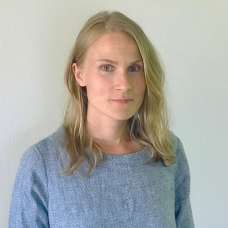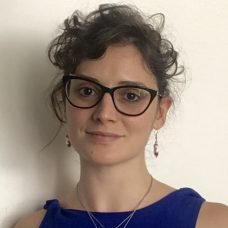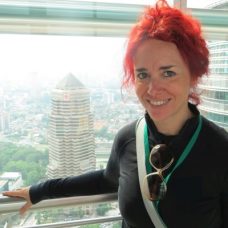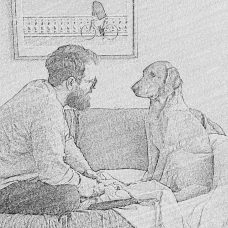Every person is responsible for anti-racist action
A one-day webinar titled “Racism: What is it and why does it matter to us all?” was organised at the Department of Geography and Geology on the 11th of May. The purpose of the webinar was to illustrate the concept of racism using an intersectional approach and especially focusing on the different manifestations of racism in the Finnish society. The seminar also aimed at guiding the participants to reflect on their own prejudices and worldview.
In this blog post, we share the webinar organizers’ point of view on the need to discuss racism at the university, how the webinar was received and our perceptions about it.
The need to address racism in one’s own work place stemmed from personal observations and awakenings. The webinar was organized by six researchers from the department; some of us have some background in research or activism/other activities related to racism and some do not. We all saw taking up the task of organizing the webinar as an opportunity to learn more about the subject.
Racism is present in Finnish society, as in other societies, in many ways. The debate on the problem of racism has increased; simultaneously, social media forums are filled with commentaries that match the definition of racism. The question we started to think about was: after all, how many university staff members and students know what racism actually is?
While we were preparing the webinar, we spent more time than ever before familiarizing ourselves with the literature (see for ex. Keskinen, Seikkula & Mkwesha 2021 and Atabong 2016) on racism as well as with the work and perspectives of Finnish anti-racist activists of color.
Based on these, we define racism as prejudices and as a social system founded on prejudices that treat certain people as inferior or otherwise put them in a bad light on the basis of e.g. their race, ethnicity, legal status or religion – be these traits assumed or real. Correspondingly, other people, who are racialised as white, are seen in a positive light because of these characteristics.
In the course of history, racism has been coded into socio-political structures and cultural products and expressions. An example of cultural expressions is how whiteness is considered the norm while differently racialised people have been and often continue to be presented through stereotypes, among others, in Finnish advertisements and films. Structural racism entails that, for instance, differently racialized persons are more frequently stopped by the police. A racist worldview is often the root of some of our prejudices towards others. It is a worldview that we have internalised as we grow up, and we should become aware of. Only then, one can unlearn racist prejudices and resist them in different sectors of society.
Last autumn one of us realised how white our university world is after reading a blog post by SOCO (Students of Color), a student association founded at the University of Helsinki. In the blog post, the students opened up their experiences of racism in the academic world and the reasons why they founded the organization. The post vividly illustrates how alienating the whiteness of universities and the blindness to people’s diversity can be. The writers also highlighted how tired students from ethnic minorities are to fight against racism and the lack of diversity. In other words, the majority-white population especially should actively talk about racism as well as take responsibility for addressing these problems.
Another one of us came to realize some time ago how common racist prejudices are among Finnish people after hearing that a cleaner’s foreign background is an issue to many people who use home cleaning services. Oftentimes the customers do not allow cleaners with a foreign background to enter their homes. Similarly, due to the racist prejudices of their customers, some forest companies need to ask their customers’ permission to use Estonian workers in forest planting. Apparently, this is not ok for everybody.
Also a study by Ahmad (2019) was eye-opening with regard to the breadth of racism in Finland. According to the study, a person with Finnish sounding name is significantly more likely to get an invitation to a job interview, compared to a person with Somali sounding name, for instance, even though the job applications are otherwise identical.
These and many other examples concerning both everyday life and broader structures reveal that a person can face racism anywhere in society. Thus, it is everybody’s responsibility to change these attitudes and take action against racism. Moreover, when last summer the Black Lives Matter movement landed visibly on the Finnish streets and social media after police officers murdered George Floyd, Breonna Taylor and many other people in the USA, we felt compelled to do something tangible and visible in the spirit of anti-racism.
Students and staff from various faculties and backgrounds attended the webinar Racism – What is it and why does it matter to us all? The webinar approached the topic from different perspectives and interactively. The aim was to encourage the participants to reflect on their own worldviews and how racism is related to their lives and to broader society. During the day, we explored the many ways in which one can be anti-racist and understand intersectionality. We also discussed experiences of racism and feelings related to processing racism.
According to the immediate feedback we received, the seminar was highly needed, people felt that racism is insufficiently discussed at the university and hopes were expressed that similar events are made mandatory for all students and staff. The webinar was seen as a good beginning to address racism more actively and speak about it openly at the university.
We hope that other departments also engage in discussions about racism, and that the topic becomes better integrated into the staff trainings. It is especially important to discuss the topic with students and to create such atmosphere and practices, that those of us who face racism in the work and study community are not left alone, but are supported and the problems are addressed. Moreover, preventive discussions on racism are crucial to everybody, so that we all can better recognize different forms of racism and learn to address it in and around us.
The authors are researchers at the Department of Geography and Geology.
References:
Ahmad, A. (2019). When the Name Matters: An Experimental Investigation of Ethnic Discrimination in the Finnish Labor Market. Sociological Inquiry 90 (3): 468-496.
Atabong, A. A. (2016). Is There Such a Thing…? A Study of Antiracism Education in Finland. PhD thesis. University of Helsinki.
Keskinen, S., Seikkula, M. & Mkwesha, F. (eds.) (2021). Rasismi, Valta ja Vastarinta. Rodullistaminen, Valkoisuus ja Koloniaalisuus Suomessa. Helsinki: Gaudeamus.
Picture: Manel Torralba.






